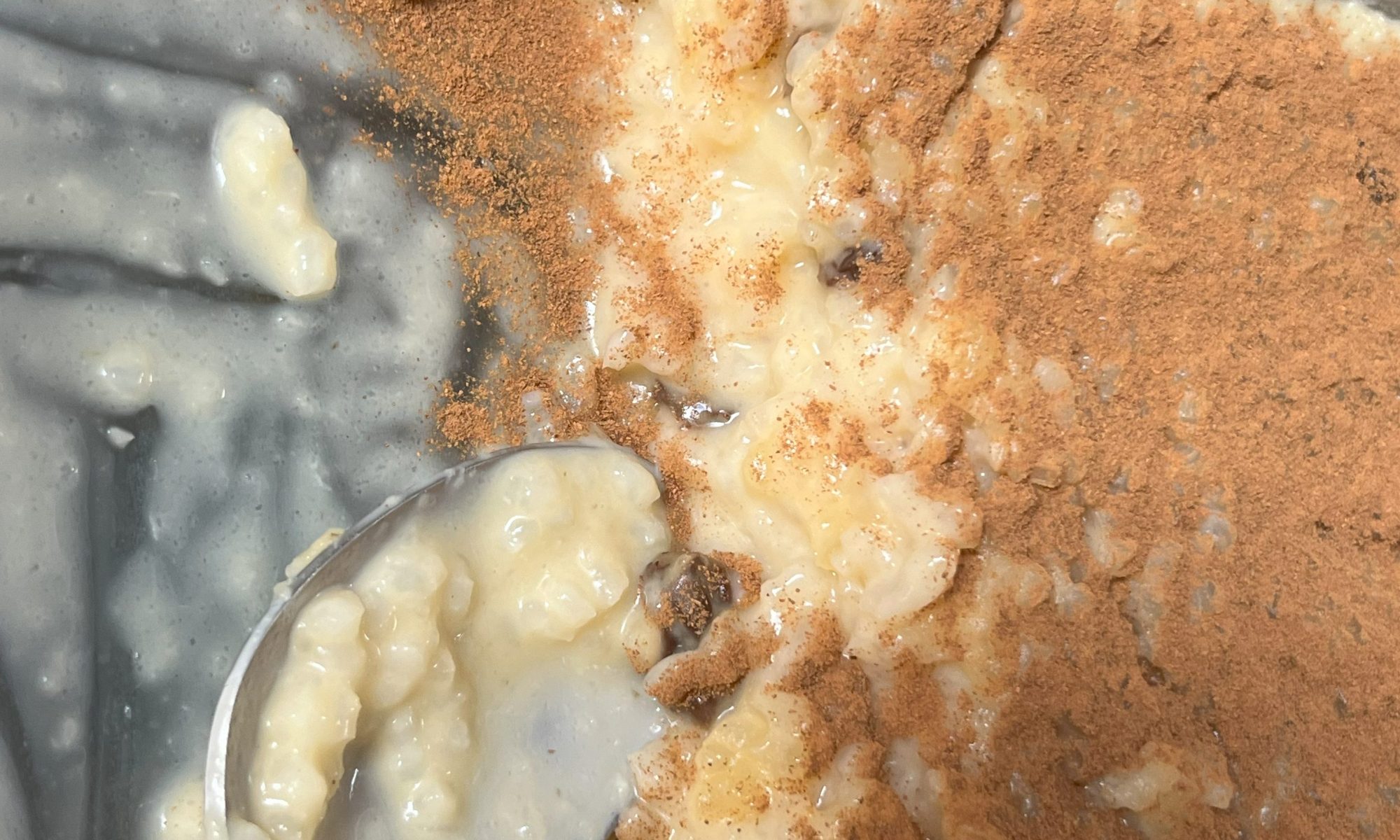In Portuguese kitchens, there’s a beloved dessert that whispers of comfort and nostalgia with every creamy spoonful: arroz doce, or Portuguese rice pudding. It’s the kind of treat that transports you to simpler times, where every bite was a comfort. Now, I’m looking to pass down this cherished recipe to my own children, hoping to instill in them the same love for this traditional Portuguese delight that I inherited from my grandmother.
Childhood Memories
In my grandmother’s cozy kitchen, Portuguese rice pudding always arrived in a humble foil dish from the local bakery, nestled alongside a bounty of freshly baked Portuguese buns. Oh, she made her own too, but our local bakery was no compromise when Avo’s counters were already full of homemade delights. Now, with eager anticipation, I’m preparing to introduce my kids to this culinary gem, promising them a taste of tradition and a slice of family history.
Portuguese Rice Pudding – How to Make Your Own
Course: DessertDifficulty: Easy8
servings5
minutes30
minutes2 hrs
A sweet and simple dessert paired perfectly with espresso.
Ingredients
1 cup arborio rice
1 cup milk (2% or higher)
3/4 cup cream (or use all milk)
3 egg yolks
1/2 cup white sugar
1/3 cup brown sugar
1-2 large pieces of lemon zest
1-2 cinnamon sticks
2 tsp vanilla (or half a vanilla bean)
2 tbsp coconut oil (butter is traditional)
Directions
- Put lemon peel, cinnamon sticks, rice and coconut oil into your rice pot.
- Cook the rice according to package directions until it’s almost done.
- While the rice cooks, heat milk and cream separately until almost boiling.
- Pour the hot milk mixture over rice, and stir gently to combine.
- Add raisins to the rice
- Add vanilla and continue to cook while stirring for five minutes
- Remove pot from heat
- Remove zest and cinnamon sticks from rice
- Add sugar and stir well to combine
- Whisk yolks and temper them by adding a spoonful of hot rice to them while stirring
- Stir in a spoonful at a time and repeat twice
- Once yolks are tempered, return the mixture to the rice and stir well to incorporate.
- Pour your rice pudding into a vessel of your choice and cool completely
- Cover generously with cinnamon and enjoy!
How to Make Portuguese Rice Pudding
Begin by using a vegetable peeler to peel one or two large pieces of lemon zest. Place your lemon peel, cinnamon sticks, rice and coconut oil into your rice pot, then start cooking your arborio rice according to package directions until it’s almost done.
While the rice works its magic, gently heat the milk and cream in a separate pot until it simmers.
Once your rice is nearly cooked, pour the hot milk mixture over it and stir gently to combine. If you’re opting for raisins, now’s the time to toss them into the mix.
Let this delightful concoction simmer for about 5 minutes, stirring frequently to prevent any sneaky rice sticking to the pot. Add vanilla while you stir.
Bid farewell to the lemon zest and cinnamon sticks – their work here is done. Then, sprinkle in both white and brown sugars, stirring until they dissolve into sweet, creamy harmony.
Take the pot off the heat and let it cool down just a smidge. In a separate bowl, whisk together the egg yolks, then slowly add spoonfuls of the warm rice mixture, stirring continuously to avoid any unwanted scrambled eggs.
Once the eggs have melded seamlessly into the rice, pour the entire mixture into a serving dish of your choice – I find a trusty casserole dish does the trick splendidly.
Pop your creation into the fridge and let it cool completely. Once chilled, dust the top with a generous sprinkling of cinnamon – it’s the finishing touch that elevates this humble dessert to heavenly heights.
Thinking Back to Different Times
So, my dear readers, I invite you to join me on this heartwarming journey into the soul of Portuguese cuisine. Bom apetite!
“As the aroma of cinnamon and lemon zest fills the kitchen, I am reminded of the times I stood by my grandmother’s side, eagerly awaiting the moment when she would unveil her signature Portuguese rice pudding. It wasn’t just a dessert; it was a vessel carrying generations of memories, love, and tradition.
Growing up, my grandmother’s kitchen was a sanctuary, a place where time seemed to slow down and worries melted away with each spoonful of her comforting creations. The sight of that humble foil dish, brimming with creamy goodness, was enough to spark joy in the hearts of our entire family.
Now, as I stand in my own kitchen, armed with her cherished recipe and a heart full of nostalgia, I can’t help but feel a sense of responsibility. I am not just making dessert; I am preserving a piece of my heritage, passing down a piece of my identity to the next generation.
The process begins with the simple act of peeling a lemon, a task that transports me back to lazy afternoons spent in my grandmother’s sunlit kitchen. Each strip of zest carries with it a story, a memory, a connection to the past.
As the rice simmers on the stove, I am filled with anticipation, knowing that soon my children will experience the same joy that I once did. The smell of coconut oil mingling with cinnamon fills the air, creating a sensory symphony that awakens the soul.
Meanwhile, the milk and cream gently bubble on the stove, infusing the air with warmth and comfort. It’s a familiar sight, one that I have witnessed countless times, yet it never fails to bring a smile to my face.
As the rice nears perfection, I pour the creamy mixture over it, watching as it swirls together in a dance of flavors and textures. The addition of plump raisins adds a burst of sweetness, elevating the dish to new heights.
As the pudding simmers gently on the stove, I take a moment to reflect on the significance of this recipe. It’s more than just a dessert; it’s a symbol of love, of family, of the ties that bind us together across generations.
Finally, as the pudding cools in the fridge, I can’t help but feel a sense of pride. I have honored my grandmother’s legacy, preserved a piece of my culture, and created a new tradition to pass down to my own children.




